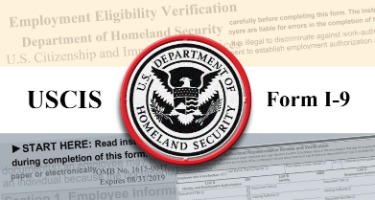Insight
Paid Leave
Eight attorneys from across the country weigh in.

A Win-Win for Everyone
1 We have long heard the phrase, “happy wife, happy life.” Perhaps the phrase should be, “happy employee, greater loyalty.” The trend among law firms and U.S. companies is to provide some form of paid leave for primary caregivers, and even paternity leave for new dads. Some states are likewise requiring employers to offer paid sick leave.
Orrick leads the law firm trend, offering 22 weeks of paid primary caregiver leave to its attorneys in the United States, with the option of taking up to nine months total leave before returning to work full time. This has paid off for Orrick, landing it on “Best Places to Work” lists and Yale Law’s “Women’s Top 10 Most Family Friendly Firms.”
The same holds true for other industries. In 2015, Nestle implemented its “Maternity Protection Policy,” giving primary caregivers (including male employees and adoptive parents) up to 14 weeks of paid leave, with the option of taking up to six months total leave. This policy reduces female attrition, leads to a happier and more productive workforce, reduces absenteeism, and optimizes recruitment.
This topic has not gone unnoticed on the political forefront. While there is no federal paid leave law, President Obama has promoted a paid leave bill in Congress. His 2015 State of the Union Address highlighted the fact that the U.S. is the only advanced economy that doesn’t mandate paid sick or maternity leave for its workers. Employers covered by the Family Medical Leave Act must provide eligible employees 12 weeks of unpaid leave for the birth or adoption of a child. And while many states have more generous maternity/paternity laws, this leave is still unpaid.
While paid leave is expensive, so is replacing, re-training, and re-hiring the employee who doesn’t return from maternity or sick leave. Companies who offer paid leave will reap the benefits of happier, more loyal employees. Studies also show that offering paid leave improves employee morale, increases productivity and profitability, decreases turnover, and reduces spread of illness, thereby decreasing additional absences. This is a win-win for employers and employees.|
Angie Davis is a shareholder in Baker Donelson’s Memphis office. She represents companies in all aspects of employment law.
America: Adopt the Global Standard
2 It is somewhat astonishing that, in 2016, America is still debating whether paid family leave is a good idea. Of 185 countries, the United States is one of only three that does not require paid maternity leave.1 Millions of hardworking mothers are forced to make the impossible choice between leaving the workforce altogether and scrambling to find reliable and affordable childcare. Of the fortunate few who work at companies with “generous” paid family leave policies, many are reluctant to do so out of fear of being “mommy tracked.”
To be clear, paid family leave is an issue that affects both men and women. More than one-fifth of two million at-home fathers in 2012 said their main reason for staying home was caring for home or family—four times the share in 1989.2 Over the past 40 years, our firm has repeatedly represented parents whose employer discriminated against them for taking family leave. America needs to do better: Employers with at least 50 employees should offer guaranteed paid family leave of 16 weeks.
Arguments against paid family leave are tired at best. Opponents claim that businesses will suffer from the cost, and that worker productivity will decline. However, there is strong evidence to the contrary. California passed the nation’s first government-mandated paid family leave program in 2004, entitling workers to six weeks of partially paid leave. Companies do not bear the direct cost because the program is completely funded by an employee payroll tax. In a 2010 survey of 250 California businesses, 87 percent reported no cost increases associated with the program, and in fact, nine percent said it reduced costs.3 Evidence also shows that women who have maternity leave are more likely to return to work after a child’s birth.4 Companies do not have to waste money and energy finding replacement workers.
So the next time someone tells you that government-mandated paid family leave is a bad idea, ask them to explain why almost every other nation provides it. How much longer will we accept America lagging behind?
Gloria Allred is a founding partner of the law firm of Allred, Maroko & Goldberg. Her firm handles more women’s rights cases than any other private firm in the nation and has won hundreds of millions of dollars for victims. Recently President Obama introduced Ms. Allred as “one of the best attorneys in the country.” Christina Cheung joined Allred, Maroko & Goldberg as an associate in September 2011, and has previously worked at the Department of Justice Civil Rights Division’s employment litigation section. Her practice focuses on representing employees for harassment, discrimination, retaliation, and wrongful termination.
Firm Advice
3 In the 1980s, when I had my first child, many law firms were struggling with the issue of how to provide reasonable and attractive maternity leave for the growing number of women attorneys. Many firms did not have formal policies—and a number of firms had policies geared toward support staff, allowing only the minimum medical leave suggested by physicians. Maternity leaves were structured like disability leaves, and did not apply to fathers or adoptive parents.
Things have certainly changed since then—and for the better. Today, law firms of all sizes have recognized the value of offering a minimum of 12 weeks paid leave—whether following the birth of a child or, as is becoming increasingly common, to help care for an aging parent—as a way to retain the best attorneys and acknowledge the long-term investment that must be made in professional growth and development.
It is important to note that paid leave does not just mean working from home, drafting briefs or responding to emails in the evenings or while the baby is napping. It means being truly unplugged and having the opportunity to take a break from work to focus on the family.
Law firms invest a significant amount of time and money in young attorneys, helping them learn not just the practice of the law, but also how to grow client relationships and develop new business. Many firms focus only on short-term benefits in terms of client work and billable hours, but the investment in attorneys should be seen as a long-term one—cultivating the next generation of firm leaders and rainmakers.
Numerous studies have shown that the most commonly cited reason for women to leave firms is issues related to childcare, and work-life balance is becoming an increasing concern for all attorneys at every stage of their careers. Offering paid leave—and, more importantly, creating a culture where attorneys feel it is acceptable to take paid leave—is vital to recruiting and retaining not only the next generation of attorneys, but currently practicing attorneys at all experience levels.
The challenge, then, for law firms is twofold: First, firms need to create leave policies and practices which do not heavily penalize attorneys who make choices related to family care or work-life balance. Second, firms need to communicate their genuine support for attorneys’ long-term body of work and their willingness to contribute to opportunities for a full and meaningful life within the financial structure of a law firm. Attorneys who feel valued and supported are happier, have greater job satisfaction, and most importantly, a greater loyalty to the firm that supported them when they needed support.
Jill Wilson is an attorney with Brooks Pierce in Greensboro, North Carolina, where she is a member of the law firm’s management committee. She has advised and/or litigated on all aspects of education and the business of education, including school board mergers, policy generation, funding disputes, civil rights issues, student conduct issues, school assignment, teacher tenure and dismissal, general employment, personal injury, construction and public contracting, and First Amendment issues.
Personal Leave Policies for All
4 According to a recent survey,1 more than 85 percent of employees decide to accept and continue employment with a particular employer because of the benefits offered by that employer. Paid leave is one of the primary benefits employers offer to attract and retain great employees. Some amount of paid leave, whether referred to as paid vacation, personal leave, sick leave, or something else, is a must in today’s workplace. Proof of this is the fact that over half of all employees report having access to some form of paid leave when sick,2 despite the fact that private employers in only four states are presently required by law to offer paid sick leave.3 Indeed, the sheer number of employers voluntarily offering some amount of paid leave to employees is evidence of the benefit to employers in doing so.
Notwithstanding the benefits, the offering of paid leave unequivocally creates a myriad of legal issues for employers. By way of example, when an employer decides to offer paid leave, the employer must decide and address issues relating to the accrual or carrying-over of paid leave, the right of an employee to be paid for the leave upon separation of employment, and the policing of the use or misuse of paid leave. Employers must also be careful to offer and apply paid leave policies in a non-discriminatory manner. By way of example, employers who offer new mothers more paid time off than new fathers may face legal action.4 The legal issues associated with paid leave policies may be the reason why some employers refrain from putting paid leave policies in writing, and, instead, prefer to address requests for paid leave informally and on a case-by-case basis.5 This, of course, creates its own set of legal issues.
Employers that feel the urge to get rid of paid leave in an attempt to avoid the related legal issues should think twice. The failure to offer paid leave also has its own set of legal issues. By way of example, consider the consequences of trying to deduct the pay of a salaried, exempt employee who does not show up for a partial day of work due to his or her need for personal leave. Also consider the consequences to employee recruiting and retention of a “no paid leave” policy, and, then, start working on your paid leave policy.
Elizabeth S. Muyskens is a member in Stoll Keenon Ogden’s Lexington, Kentucky, office, in its labor, employment & employee benefits practice and has been with the firm since 2008. Elizabeth’s practice includes counseling employers, litigating employment law disputes, and representing employers in administrative proceedings.
The Importance of Family Obligations
5 Laws such as the Family and Medical Leave Act in 1993, which provides up to 12 weeks of unpaid, protected family leave, and the Patient Protection and Affordable Care Act, which amended the Fair Labor Standards Act to require employers to provide reasonable break time and a private place (other than a restroom) for nursing mothers, have assisted with certain family and medical priorities, especially for women. The trend is toward providing paid family and medical leave to employees, and several states and private businesses have been expanding their paid benefits for the overall health and well-being of employees and families to keep employees happy and productive, and to recruit the best and brightest candidates for an expanding workforce.
Three states, California, New Jersey, and Rhode Island, offer state-funded paid family and medical leave programs for employees during periods that would otherwise be unpaid. California, Connecticut, the District of Columbia, and Massachusetts require employers to provide paid sick leave to employees. Additionally, several states have passed laws requiring employers to provide a number of hours to employees for certain school and parental responsibilities, such as attending parent-teacher conferences.1 Although typically unpaid, the introduction of protected time for involvement in children’s school activities is another indicator that employers are acknowledging, whether by law on or their own accord, the importance of family obligations.
In addition to the states themselves, the White House has been advocating the expansion of paid leave laws across the country, reporting that “paid parental leave improves infant health and cognitive development, even increasing children’s earnings in adulthood,” and that it benefits employers “by increasing employees’ productivity, reducing turnover, and minimizing the loss of firm-specific skills and human capital.”2 The White House also reported that, as to women, paid maternity leave increases the chance that working mothers will return to work after childbirth and may increase the length of their employment.3
Eric J. Holshouser is a shareholder with Buchanan Ingersoll & Rooney. He represents employers in both state and federal courts in all areas of labor and employment law including labor relations, discrimination, non-compete enforcement, sexual harassment, wrongful discharge, wage and hour, breach of contract, and fraud. He is a former chair of the labor and employment section of the Florida Bar and the chair-elect for the American Lung Association for the Southeast, Inc.
Mother vs. Lawyer
6 I cherished the time I had with my children after they were born. I felt very grateful to be paid while on maternity leave. I was proud of my firm for being so generous to its working mothers, and I accepted the benefit gladly. However, according to the Department of Labor, only 12 percent of employees in the United States have access to paid family leave. While short-term disability insurance may serve to replace some percentage of pay while an employee is on leave, less than 40 percent of workers in this country receive that benefit.
The mother in me says we should change the laws immediately. The lawyer in me recognizes that there are many costs and benefits to be balanced before that can happen. Mechanisms must be put in place to curtail potential fraud and abuse. Many smaller employers may suffer greatly if required to take on the costs of paid family leave. In the District of Columbia, where I practice and where newly introduced legislation proposes a tax on employers to fund a very generous paid family leave plan (16 weeks), opponents are already worried about the backlash—will the city attract new employers when those employers will face mandatory requirements and taxes that are not in place just across the Potomac?
No matter where you come out on the social and political issues, the debate is a healthy one that we should be having. Without federal legislation, states are certain to enact conflicting and inconsistent laws. Specific requirements for paid sick leave in California are different from those in Maryland, which are in turn different from those in Oregon, to name just a few. Not to mention city and county ordinances, which vary within states. For employers with operations in multiple states, navigating these laws is difficult and the landmines are real.
Many employers who operate in multiple states are choosing to adopt policies that comply with the most employee-friendly laws so that they do not have inconsistent practices across state or local lines. Some employers are hoping for federal lawmaking on the issues so that states and localities will feel less pressure to go their own way. The best advice I can give, for now and in the absence of federal requirements (which likely would not preempt more generous state laws), is for employers to be vigilant in keeping up with what is happening in all states and localities in which they operate. It is a tall task, but staying on the right side of the law is critical. I also encourage employers to explore potential benefits that may in fact outweigh the costs of voluntarily offering paid family or sick leave, including reputational gains, increased morale, recruitment benefits, and reduction of costs associated with attrition.
Carson Sullivan is a partner in the employment law practice of Paul Hastings and is co-chair of the firm’s Washington, D.C., employment law department. She counsels employers in all aspects of employment law. Her practice is particularly focused on litigation involving trade secrets and restrictive covenants and on the defense of employment related class action suits.
Millennials Matter
7 President Obama used his executive authority in 2015 to require six weeks of paid family leave for federal employees who are new parents, but Congressional proposals to federally mandate broader coverage have failed thus far. While paid family leave may be good for the health and development of children, burdening employers with all the costs could lead to fewer jobs or lower wages. One proposal attempts to address that by funding replacement wages during leave by imposing a small payroll tax (0.2 percent) on both employers and employees—about $1.50/week per worker, according to the National Partnership for Women and Families. Other proposals are also being floated.
Some private employers are going well beyond any government mandate. Companies like Google, Netflix, Facebook, and Yahoo lead the way with paid family leave—they need millennials, and millennials care about work-life balance. Millennials are the fastest growing segment of the workforce, and full-time millennials are almost twice as likely to have a spouse/partner working at least full time than baby boomers, according to a 2015 study by Ernst & Young. So if a business wants to recruit and retain millennials, paid family leave could really matter.
In some places, laws cover employers with as few as a single employee, and some mandate paid sick days for employees regardless of where they are located. Most sick leave laws require employees work a certain number of hours. Leave is generally available for the illness of the employee or a family member. Federal contractors should pay special attention after President Obama’s 2015 executive order, which permits employees working on federal contracts and subcontracts to earn at least one hour of paid sick leave for every 30 hours worked, up to seven days or more of paid sick leave each year.
The lesson for employers: Paid leave laws are on the rise. Employers should monitor developments, ensure compliance with leave laws, and pay attention to what the impact of paid leave on recruiting and retaining workers.
Karen Buesing has represented management in employment law matters for more than 30 years and is one of only about 200 lawyers in Florida who are board certified by the Florida Bar as specialists in labor and employment law.
The Bottom Line
8 In the last 40 years, our nation’s workforce has changed significantly. In the 1970s, approximately half of women ages 25 to 54 were in the workforce. By the early 1990s, three-quarters of these women were in the labor force. This trend, combined with an increase in single-parent households, has resulted in 63 percent of children living in a family where all of the parents work. Additionally, caregiving obligations for elder family members have increased. Today, those 65 or older number more greatly than at any other point in the 20th century. Despite these changes, a significant number of American workers still do not have access to leave benefits or flexible work schedules. Even those employees who may have access to some form of unpaid leave cannot afford to incur even a brief interruption in income.
There is little to suggest paid leave is detrimental to employers, and much to suggest it is actually beneficial. California’s program provides six weeks of paid leave at approximately 55 percent of the employee’s usual weekly earnings with a maximum weekly benefit. In 2012, Connecticut became the first state to implement legislation requiring certain employers to offer paid sick leave. Covered workers earn one hour of paid leave for every 40 hours worked, up to a total of 40 hours of paid leave (five days) in a calendar year. Like California, impacted employers in Connecticut have not reported any adverse implications to the bottom line.
Moreover, the evidence is mounting that lack of access to paid leave actually harms an employer’s bottom line. Not only do studies show that the lack of family-friendly business policies negatively impacts the ability to recruit and retain talent, the absence of such policies can lead to costly worker turnover. In a survey of human resource managers, two-thirds cited family-friendly policies as the single most important factor in attracting and retaining employees. Given that the cost of replacing an employee is approximately 21 percent of that person’s annual salary, the absence of family-friendly policies has a substantial impact on the bottom line.
The lack of paid leave can also impact the overall health of an employer’s workforce. Employees, particularly lower earning employees, who cannot afford the financial impact of taking time off work without pay, are more likely to report to work when sick. That individual is less productive in his/her own duties, and the risk of infecting others increases substantially. Moreover, when employees lose income because of illness or the illness of a family member, these individuals have less expendable income to inject in the economy. Finally, the influx of technology in our day-to-day working lives means that many employees are able to perform productive work even when they are not physically located at an employer’s work site.
Kim Jones focuses her practice exclusively on advising employers on legal compliance and defending companies in employment-related litigation. Kim has successfully represented clients in individual, multiparty, and class action litigation nationwide.
Gloria Allred and Christina Cheung
1 Adam Peck, U.S Paid Family Leave Versus the Rest of the World, In 2 Disturbing Charts, Think Progress, July 30, 2014, https://thinkprogress.org/economy/2014/07/30/3465922/paid-family-leave/.
2 Kim Parker, 5 Facts about Today’s Fathers, Pew Research Center, June 18, 2015, https://www.pewresearch.org/fact-tank/2015/06/18/5-facts-about-todays-fathers/.
3 Eileen Appelbaum and Ruth Milkman, Paid Family Leave Pays Off in California, Harvard Business Review, Jan. 19, 2011, https://hbr.org/2011/01/paid-family-leave-pays-off-in/.
4 Lyndsey Gilpin, 10 Things You Need to Know about Maternity Leave in the US, Tech Republic, May 8, 2015, https://www.techrepublic.com/article/10-things-you-need-to-know-about-maternity-leave-in-the-us/.
Eric J. Holshouser
1 See National Conference of State Legislators’ article on State and Family Medical Leave Laws at www.ncsl.org and Bloomberg Law’s State Comparison Chart on Family Leave at www.bloomberglaw.com.
2 Why Our Economy Needs Paid Leave, 2015 WL 179077, at *1 (Jan. 15, 2015).
3 Id.
Elizabeth S. Muyskens
1 See Guidespark, Employees Speak Up About Benefits Communications: April 2014 Survey Report (Apr. 2014)
2 See Exec. Office of President, Council of Econ. Advisors, The Economics of Paid And Unpaid Leave (June 2014)
3 See Paid Sick Leave, Nat’l Conf. of State Legislatures (Oct. 19, 2015), https://www.ncsl.org/research/labor-and-employment/paid-sick-leave.aspx.
4 See Noam Scheiber, Attitudes Shift on Paid Leave: Dads Sue, Too, N.Y. TIMES, Sept. 15, 2015, available at https://www.nytimes.com/2015/09/16/business/attitudes-shift-on-paid-leave-dads-sue-too.html?_r=0.
5 See Exec. Office of President, Council of Econ. Advisors, supra note 2.
To suggest a topic for the next issue email mhchaney@bestlawyers.com with the subject line, “Points.”
1 We have long heard the phrase, “happy wife, happy life.” Perhaps the phrase should be, “happy employee, greater loyalty.” The trend among law firms and U.S. companies is to provide some form of paid leave for primary caregivers, and even paternity leave for new dads. Some states are likewise requiring employers to offer paid sick leave.
Orrick leads the law firm trend, offering 22 weeks of paid primary caregiver leave to its attorneys in the United States, with the option of taking up to nine months total leave before returning to work full time. This has paid off for Orrick, landing it on “Best Places to Work” lists and Yale Law’s “Women’s Top 10 Most Family Friendly Firms.”
The same holds true for other industries. In 2015, Nestle implemented its “Maternity Protection Policy,” giving primary caregivers (including male employees and adoptive parents) up to 14 weeks of paid leave, with the option of taking up to six months total leave. This policy reduces female attrition, leads to a happier and more productive workforce, reduces absenteeism, and optimizes recruitment.
This topic has not gone unnoticed on the political forefront. While there is no federal paid leave law, President Obama has promoted a paid leave bill in Congress. His 2015 State of the Union Address highlighted the fact that the U.S. is the only advanced economy that doesn’t mandate paid sick or maternity leave for its workers. Employers covered by the Family Medical Leave Act must provide eligible employees 12 weeks of unpaid leave for the birth or adoption of a child. And while many states have more generous maternity/paternity laws, this leave is still unpaid.
While paid leave is expensive, so is replacing, re-training, and re-hiring the employee who doesn’t return from maternity or sick leave. Companies who offer paid leave will reap the benefits of happier, more loyal employees. Studies also show that offering paid leave improves employee morale, increases productivity and profitability, decreases turnover, and reduces spread of illness, thereby decreasing additional absences. This is a win-win for employers and employees.|
Angie Davis is a shareholder in Baker Donelson’s Memphis office. She represents companies in all aspects of employment law.
America: Adopt the Global Standard
2 It is somewhat astonishing that, in 2016, America is still debating whether paid family leave is a good idea. Of 185 countries, the United States is one of only three that does not require paid maternity leave.1 Millions of hardworking mothers are forced to make the impossible choice between leaving the workforce altogether and scrambling to find reliable and affordable childcare. Of the fortunate few who work at companies with “generous” paid family leave policies, many are reluctant to do so out of fear of being “mommy tracked.”
To be clear, paid family leave is an issue that affects both men and women. More than one-fifth of two million at-home fathers in 2012 said their main reason for staying home was caring for home or family—four times the share in 1989.2 Over the past 40 years, our firm has repeatedly represented parents whose employer discriminated against them for taking family leave. America needs to do better: Employers with at least 50 employees should offer guaranteed paid family leave of 16 weeks.
Arguments against paid family leave are tired at best. Opponents claim that businesses will suffer from the cost, and that worker productivity will decline. However, there is strong evidence to the contrary. California passed the nation’s first government-mandated paid family leave program in 2004, entitling workers to six weeks of partially paid leave. Companies do not bear the direct cost because the program is completely funded by an employee payroll tax. In a 2010 survey of 250 California businesses, 87 percent reported no cost increases associated with the program, and in fact, nine percent said it reduced costs.3 Evidence also shows that women who have maternity leave are more likely to return to work after a child’s birth.4 Companies do not have to waste money and energy finding replacement workers.
So the next time someone tells you that government-mandated paid family leave is a bad idea, ask them to explain why almost every other nation provides it. How much longer will we accept America lagging behind?
Gloria Allred is a founding partner of the law firm of Allred, Maroko & Goldberg. Her firm handles more women’s rights cases than any other private firm in the nation and has won hundreds of millions of dollars for victims. Recently President Obama introduced Ms. Allred as “one of the best attorneys in the country.” Christina Cheung joined Allred, Maroko & Goldberg as an associate in September 2011, and has previously worked at the Department of Justice Civil Rights Division’s employment litigation section. Her practice focuses on representing employees for harassment, discrimination, retaliation, and wrongful termination.
Firm Advice
3 In the 1980s, when I had my first child, many law firms were struggling with the issue of how to provide reasonable and attractive maternity leave for the growing number of women attorneys. Many firms did not have formal policies—and a number of firms had policies geared toward support staff, allowing only the minimum medical leave suggested by physicians. Maternity leaves were structured like disability leaves, and did not apply to fathers or adoptive parents.
Things have certainly changed since then—and for the better. Today, law firms of all sizes have recognized the value of offering a minimum of 12 weeks paid leave—whether following the birth of a child or, as is becoming increasingly common, to help care for an aging parent—as a way to retain the best attorneys and acknowledge the long-term investment that must be made in professional growth and development.
It is important to note that paid leave does not just mean working from home, drafting briefs or responding to emails in the evenings or while the baby is napping. It means being truly unplugged and having the opportunity to take a break from work to focus on the family.
Law firms invest a significant amount of time and money in young attorneys, helping them learn not just the practice of the law, but also how to grow client relationships and develop new business. Many firms focus only on short-term benefits in terms of client work and billable hours, but the investment in attorneys should be seen as a long-term one—cultivating the next generation of firm leaders and rainmakers.
Numerous studies have shown that the most commonly cited reason for women to leave firms is issues related to childcare, and work-life balance is becoming an increasing concern for all attorneys at every stage of their careers. Offering paid leave—and, more importantly, creating a culture where attorneys feel it is acceptable to take paid leave—is vital to recruiting and retaining not only the next generation of attorneys, but currently practicing attorneys at all experience levels.
The challenge, then, for law firms is twofold: First, firms need to create leave policies and practices which do not heavily penalize attorneys who make choices related to family care or work-life balance. Second, firms need to communicate their genuine support for attorneys’ long-term body of work and their willingness to contribute to opportunities for a full and meaningful life within the financial structure of a law firm. Attorneys who feel valued and supported are happier, have greater job satisfaction, and most importantly, a greater loyalty to the firm that supported them when they needed support.
Jill Wilson is an attorney with Brooks Pierce in Greensboro, North Carolina, where she is a member of the law firm’s management committee. She has advised and/or litigated on all aspects of education and the business of education, including school board mergers, policy generation, funding disputes, civil rights issues, student conduct issues, school assignment, teacher tenure and dismissal, general employment, personal injury, construction and public contracting, and First Amendment issues.
Personal Leave Policies for All
4 According to a recent survey,1 more than 85 percent of employees decide to accept and continue employment with a particular employer because of the benefits offered by that employer. Paid leave is one of the primary benefits employers offer to attract and retain great employees. Some amount of paid leave, whether referred to as paid vacation, personal leave, sick leave, or something else, is a must in today’s workplace. Proof of this is the fact that over half of all employees report having access to some form of paid leave when sick,2 despite the fact that private employers in only four states are presently required by law to offer paid sick leave.3 Indeed, the sheer number of employers voluntarily offering some amount of paid leave to employees is evidence of the benefit to employers in doing so.
Notwithstanding the benefits, the offering of paid leave unequivocally creates a myriad of legal issues for employers. By way of example, when an employer decides to offer paid leave, the employer must decide and address issues relating to the accrual or carrying-over of paid leave, the right of an employee to be paid for the leave upon separation of employment, and the policing of the use or misuse of paid leave. Employers must also be careful to offer and apply paid leave policies in a non-discriminatory manner. By way of example, employers who offer new mothers more paid time off than new fathers may face legal action.4 The legal issues associated with paid leave policies may be the reason why some employers refrain from putting paid leave policies in writing, and, instead, prefer to address requests for paid leave informally and on a case-by-case basis.5 This, of course, creates its own set of legal issues.
Employers that feel the urge to get rid of paid leave in an attempt to avoid the related legal issues should think twice. The failure to offer paid leave also has its own set of legal issues. By way of example, consider the consequences of trying to deduct the pay of a salaried, exempt employee who does not show up for a partial day of work due to his or her need for personal leave. Also consider the consequences to employee recruiting and retention of a “no paid leave” policy, and, then, start working on your paid leave policy.
Elizabeth S. Muyskens is a member in Stoll Keenon Ogden’s Lexington, Kentucky, office, in its labor, employment & employee benefits practice and has been with the firm since 2008. Elizabeth’s practice includes counseling employers, litigating employment law disputes, and representing employers in administrative proceedings.
The Importance of Family Obligations
5 Laws such as the Family and Medical Leave Act in 1993, which provides up to 12 weeks of unpaid, protected family leave, and the Patient Protection and Affordable Care Act, which amended the Fair Labor Standards Act to require employers to provide reasonable break time and a private place (other than a restroom) for nursing mothers, have assisted with certain family and medical priorities, especially for women. The trend is toward providing paid family and medical leave to employees, and several states and private businesses have been expanding their paid benefits for the overall health and well-being of employees and families to keep employees happy and productive, and to recruit the best and brightest candidates for an expanding workforce.
Three states, California, New Jersey, and Rhode Island, offer state-funded paid family and medical leave programs for employees during periods that would otherwise be unpaid. California, Connecticut, the District of Columbia, and Massachusetts require employers to provide paid sick leave to employees. Additionally, several states have passed laws requiring employers to provide a number of hours to employees for certain school and parental responsibilities, such as attending parent-teacher conferences.1 Although typically unpaid, the introduction of protected time for involvement in children’s school activities is another indicator that employers are acknowledging, whether by law on or their own accord, the importance of family obligations.
In addition to the states themselves, the White House has been advocating the expansion of paid leave laws across the country, reporting that “paid parental leave improves infant health and cognitive development, even increasing children’s earnings in adulthood,” and that it benefits employers “by increasing employees’ productivity, reducing turnover, and minimizing the loss of firm-specific skills and human capital.”2 The White House also reported that, as to women, paid maternity leave increases the chance that working mothers will return to work after childbirth and may increase the length of their employment.3
Eric J. Holshouser is a shareholder with Buchanan Ingersoll & Rooney. He represents employers in both state and federal courts in all areas of labor and employment law including labor relations, discrimination, non-compete enforcement, sexual harassment, wrongful discharge, wage and hour, breach of contract, and fraud. He is a former chair of the labor and employment section of the Florida Bar and the chair-elect for the American Lung Association for the Southeast, Inc.
Mother vs. Lawyer
6 I cherished the time I had with my children after they were born. I felt very grateful to be paid while on maternity leave. I was proud of my firm for being so generous to its working mothers, and I accepted the benefit gladly. However, according to the Department of Labor, only 12 percent of employees in the United States have access to paid family leave. While short-term disability insurance may serve to replace some percentage of pay while an employee is on leave, less than 40 percent of workers in this country receive that benefit.
The mother in me says we should change the laws immediately. The lawyer in me recognizes that there are many costs and benefits to be balanced before that can happen. Mechanisms must be put in place to curtail potential fraud and abuse. Many smaller employers may suffer greatly if required to take on the costs of paid family leave. In the District of Columbia, where I practice and where newly introduced legislation proposes a tax on employers to fund a very generous paid family leave plan (16 weeks), opponents are already worried about the backlash—will the city attract new employers when those employers will face mandatory requirements and taxes that are not in place just across the Potomac?
No matter where you come out on the social and political issues, the debate is a healthy one that we should be having. Without federal legislation, states are certain to enact conflicting and inconsistent laws. Specific requirements for paid sick leave in California are different from those in Maryland, which are in turn different from those in Oregon, to name just a few. Not to mention city and county ordinances, which vary within states. For employers with operations in multiple states, navigating these laws is difficult and the landmines are real.
Many employers who operate in multiple states are choosing to adopt policies that comply with the most employee-friendly laws so that they do not have inconsistent practices across state or local lines. Some employers are hoping for federal lawmaking on the issues so that states and localities will feel less pressure to go their own way. The best advice I can give, for now and in the absence of federal requirements (which likely would not preempt more generous state laws), is for employers to be vigilant in keeping up with what is happening in all states and localities in which they operate. It is a tall task, but staying on the right side of the law is critical. I also encourage employers to explore potential benefits that may in fact outweigh the costs of voluntarily offering paid family or sick leave, including reputational gains, increased morale, recruitment benefits, and reduction of costs associated with attrition.
Carson Sullivan is a partner in the employment law practice of Paul Hastings and is co-chair of the firm’s Washington, D.C., employment law department. She counsels employers in all aspects of employment law. Her practice is particularly focused on litigation involving trade secrets and restrictive covenants and on the defense of employment related class action suits.
Millennials Matter
7 President Obama used his executive authority in 2015 to require six weeks of paid family leave for federal employees who are new parents, but Congressional proposals to federally mandate broader coverage have failed thus far. While paid family leave may be good for the health and development of children, burdening employers with all the costs could lead to fewer jobs or lower wages. One proposal attempts to address that by funding replacement wages during leave by imposing a small payroll tax (0.2 percent) on both employers and employees—about $1.50/week per worker, according to the National Partnership for Women and Families. Other proposals are also being floated.
Some private employers are going well beyond any government mandate. Companies like Google, Netflix, Facebook, and Yahoo lead the way with paid family leave—they need millennials, and millennials care about work-life balance. Millennials are the fastest growing segment of the workforce, and full-time millennials are almost twice as likely to have a spouse/partner working at least full time than baby boomers, according to a 2015 study by Ernst & Young. So if a business wants to recruit and retain millennials, paid family leave could really matter.
In some places, laws cover employers with as few as a single employee, and some mandate paid sick days for employees regardless of where they are located. Most sick leave laws require employees work a certain number of hours. Leave is generally available for the illness of the employee or a family member. Federal contractors should pay special attention after President Obama’s 2015 executive order, which permits employees working on federal contracts and subcontracts to earn at least one hour of paid sick leave for every 30 hours worked, up to seven days or more of paid sick leave each year.
The lesson for employers: Paid leave laws are on the rise. Employers should monitor developments, ensure compliance with leave laws, and pay attention to what the impact of paid leave on recruiting and retaining workers.
Karen Buesing has represented management in employment law matters for more than 30 years and is one of only about 200 lawyers in Florida who are board certified by the Florida Bar as specialists in labor and employment law.
The Bottom Line
8 In the last 40 years, our nation’s workforce has changed significantly. In the 1970s, approximately half of women ages 25 to 54 were in the workforce. By the early 1990s, three-quarters of these women were in the labor force. This trend, combined with an increase in single-parent households, has resulted in 63 percent of children living in a family where all of the parents work. Additionally, caregiving obligations for elder family members have increased. Today, those 65 or older number more greatly than at any other point in the 20th century. Despite these changes, a significant number of American workers still do not have access to leave benefits or flexible work schedules. Even those employees who may have access to some form of unpaid leave cannot afford to incur even a brief interruption in income.
There is little to suggest paid leave is detrimental to employers, and much to suggest it is actually beneficial. California’s program provides six weeks of paid leave at approximately 55 percent of the employee’s usual weekly earnings with a maximum weekly benefit. In 2012, Connecticut became the first state to implement legislation requiring certain employers to offer paid sick leave. Covered workers earn one hour of paid leave for every 40 hours worked, up to a total of 40 hours of paid leave (five days) in a calendar year. Like California, impacted employers in Connecticut have not reported any adverse implications to the bottom line.
Moreover, the evidence is mounting that lack of access to paid leave actually harms an employer’s bottom line. Not only do studies show that the lack of family-friendly business policies negatively impacts the ability to recruit and retain talent, the absence of such policies can lead to costly worker turnover. In a survey of human resource managers, two-thirds cited family-friendly policies as the single most important factor in attracting and retaining employees. Given that the cost of replacing an employee is approximately 21 percent of that person’s annual salary, the absence of family-friendly policies has a substantial impact on the bottom line.
The lack of paid leave can also impact the overall health of an employer’s workforce. Employees, particularly lower earning employees, who cannot afford the financial impact of taking time off work without pay, are more likely to report to work when sick. That individual is less productive in his/her own duties, and the risk of infecting others increases substantially. Moreover, when employees lose income because of illness or the illness of a family member, these individuals have less expendable income to inject in the economy. Finally, the influx of technology in our day-to-day working lives means that many employees are able to perform productive work even when they are not physically located at an employer’s work site.
Kim Jones focuses her practice exclusively on advising employers on legal compliance and defending companies in employment-related litigation. Kim has successfully represented clients in individual, multiparty, and class action litigation nationwide.
Gloria Allred and Christina Cheung
1 Adam Peck, U.S Paid Family Leave Versus the Rest of the World, In 2 Disturbing Charts, Think Progress, July 30, 2014, https://thinkprogress.org/economy/2014/07/30/3465922/paid-family-leave/.
2 Kim Parker, 5 Facts about Today’s Fathers, Pew Research Center, June 18, 2015, https://www.pewresearch.org/fact-tank/2015/06/18/5-facts-about-todays-fathers/.
3 Eileen Appelbaum and Ruth Milkman, Paid Family Leave Pays Off in California, Harvard Business Review, Jan. 19, 2011, https://hbr.org/2011/01/paid-family-leave-pays-off-in/.
4 Lyndsey Gilpin, 10 Things You Need to Know about Maternity Leave in the US, Tech Republic, May 8, 2015, https://www.techrepublic.com/article/10-things-you-need-to-know-about-maternity-leave-in-the-us/.
Eric J. Holshouser
1 See National Conference of State Legislators’ article on State and Family Medical Leave Laws at www.ncsl.org and Bloomberg Law’s State Comparison Chart on Family Leave at www.bloomberglaw.com.
2 Why Our Economy Needs Paid Leave, 2015 WL 179077, at *1 (Jan. 15, 2015).
3 Id.
Elizabeth S. Muyskens
1 See Guidespark, Employees Speak Up About Benefits Communications: April 2014 Survey Report (Apr. 2014)
2 See Exec. Office of President, Council of Econ. Advisors, The Economics of Paid And Unpaid Leave (June 2014)
3 See Paid Sick Leave, Nat’l Conf. of State Legislatures (Oct. 19, 2015), https://www.ncsl.org/research/labor-and-employment/paid-sick-leave.aspx.
4 See Noam Scheiber, Attitudes Shift on Paid Leave: Dads Sue, Too, N.Y. TIMES, Sept. 15, 2015, available at https://www.nytimes.com/2015/09/16/business/attitudes-shift-on-paid-leave-dads-sue-too.html?_r=0.
5 See Exec. Office of President, Council of Econ. Advisors, supra note 2.
To suggest a topic for the next issue email mhchaney@bestlawyers.com with the subject line, “Points.”
































